Pacific Horticulture: Pillar Topics
Our Pillar Topics
Pacific Horticulture has arranged many of its articles by their Pillar Topics, please click on one of the images or links below to view articles and resources on each topic.
FIRE PREPAREDNESS WILDLIFE & HABITAT PLANTING DROUGHT RESILIENCE SOIL HEALTH URBAN & WATERSHED ECOLOGY CLIMATE-ADAPTED PLANT SELECTIONS PLANT RELATED CULTURAL PRACTICES HOW NATURE SUPPORTS HUMAN HEALTH
 Fire Preparedness
Fire Preparedness
Fire is powerful, consuming, and terrifying—quite literally, a force of nature. The devastating fires in 2017 were a wake-up call to assess vulnerable landscapes and do what we can to fireproof our gardens, and in turn provide a measure of protection to homes and property. Here at Pacific Horticulture, we’ve compiled a roundup of digital resources for gardeners facing recovery as well as anyone interested in creating a resilient, fire-safe landscape in a dry region.
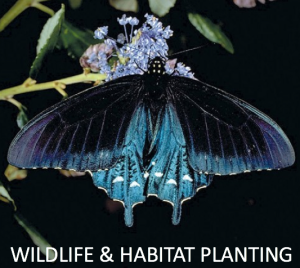 Wildlife & Habitat Planting
Wildlife & Habitat Planting
Wildlife gardening, also called habitat gardening, generally refers to creating gardens with plant associations and vegetation communities that are inviting to birds and beneficial insects. In this new paradigm, our gardens are not just for human pleasure and food production. Gardens and urban landscapes can supply the food, water, and shelter that wild lands and fallow fields once provided for these creatures.
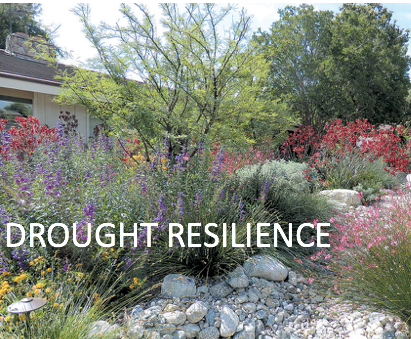 Drought Resilience
Drought Resilience
Drought years also pose challenges for the entire nursery industry. Faced with water restrictions, surcharges, and unusually dry conditions, many gardeners struggle with whether to “take a year off” from investing time and resources in their personal landscape. Others would never even consider skipping the seasonal pleasures and satisfaction our gardens offer.
 Soil Health
Soil Health
Take a good look at the soil in your garden. Turn over a shovelful and grab a handful. Good garden soil will be crumbly and easy to dig, have a sweet earthy aroma, and be a medium shade of brown. If your soil is hard to dig, doesn’t hold together in small clumps, smells sour, or is ghostly pale in color, then some proper amendment and cultivation will be in order.
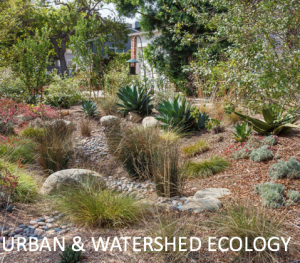
Urban & Watershed Ecology
The watershed approach to gardening uses bioswales to redirect water to root systems in a way that promotes drought tolerance and resiliency. Watershed gardening means thinking toward the future, rather than recreating plant communities for climate conditions that no longer exist. The challenge will be in selecting plants that grow well together and can adapt to future conditions while remaining eye-catching.
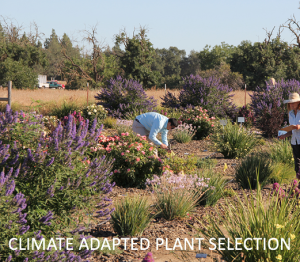 Climate Adapted Plant Selection
Climate Adapted Plant Selection
Applying these practices to an existing landscape is still possible by mulching beds, thinning overcrowded plants, and adjusting irrigation schedules. At the end of the day, identifying climate-resilient plants is only a piece of a greater challenge to manage landscapes in a holistic manner that accounts for plants, irrigation, and maintenance.
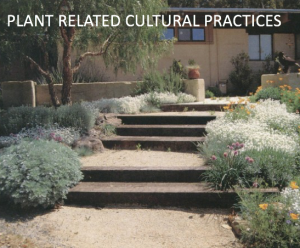
Plant Related Cultural Practices
A garden is a personal expression of the gardener or designer—a physical response to the need for space, privacy, retreat, and recreation, and to individual preferences for sensual qualities. This might include inspiration from historic precedents in the Mediterranean that adapt to our needs without being merely eclectic.
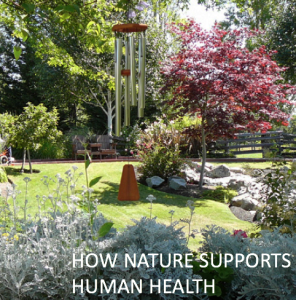 How Nature Supports Human Health
How Nature Supports Human Health
90 percent of garden users experienced a positive change of mood after time spent outdoors. What becomes clear in Therapeutic Landscapes is that no single ideal of a garden is an effective healing space for all situations. Issues of climate, location, and very importantly, the specific needs of different patient and staff populations can change everything.
